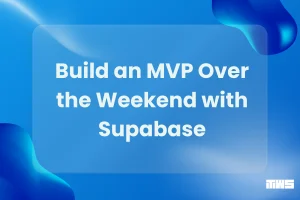
Table of Content
The Feature Creep Trap Is Real
You raised funding. You have a vision. You want to “build fast and break things.”
But here’s the truth: over 70% of HealthTech startups blow 6–12 months building features that no one uses.
This silent killer is called feature creep — and it’s burning your budget, time, and team.
What Is Feature Creep — and Why Is It So Dangerous?
Feature creep is when products expand beyond their core value — trying to please too many stakeholders or solve too many problems at once.
In telemedicine, this often looks like:
- Overcomplicated onboarding flows
- Fancy dashboards patients never see
- Half-integrated EHR systems
- 3 booking flows “just in case”
The result?
- ❌ Your team is overwhelmed
- ❌ Your budget’s bleeding
- ❌ You miss your go-to-market window
A McKinsey report notes that up to 45% of digital health funding is wasted due to poor execution or misaligned product decisions.
How Much Does It Really Cost You?
Here’s what we see across HealthTech startups:
| Issue | Estimated Burn |
|---|---|
| 3 extra features that users ignore | $30–70k in dev/design |
| Missed 3-month launch deadline | $100k+ in delayed revenue |
| Rebuilding unstable code | $40–80k technical debt |
| Overloaded dev team | Burnout + hiring costs |
One of our clients was 6 months in and $200k down — with no usable MVP.
After a full audit, we stripped 60% of non-critical features and helped them launch in 7 weeks.
They now serve 5k+ active users/month. See case in our portfolio
Common Reasons Founders Fall Into the Trap
- Too many stakeholders: Every advisor wants “one more thing”
- FOMO: You think “we need that too” because competitors have it
- No product strategy: There’s no clear prioritization or user focus
- No engineering visibility: You don’t see the cost behind every feature
And worst of all — you only realize this after the runway starts to shrink.
Fix #1: Start With the Problem, Not the Feature
Don’t start with “let’s add AI-powered follow-ups.”
Start with: “Patients drop off after first call — why?”
Every feature must tie to:
- Activation
- Retention
- Monetization
- Compliance / stability
If it doesn’t → cut it, delay it, or prototype it outside your core stack.
Fix #2: Run a Product + Tech Audit
You need outside perspective — and a brutal prioritization pass.
At Team Work Spirit, we created a 3-minute audit that helps HealthTech founders:
- Identify product bottlenecks
- Assess tech risks
- Get a tactical report to share with team/investors
Run the audit now
It’s free, fast, and shows exactly what’s slowing you down.
Fix #3: Outsource Smart (Not Cheap)
Software development outsourcing can be a game-changer — or a nightmare. The key is to:
- Choose partners who understand healthcare, not just code
- Demand UX+Dev+Compliance thinking in one team
- Focus on outcomes (launch dates, metrics), not tasks
We’ve helped HealthTech founders:
- Build MVPs in 6–10 weeks
- Refactor messy legacy code
- Pass HIPAA reviews
- Scale platforms across 5+ countries
Explore real projects:
https://www.twsgo.com/portfolio
Fix #4: Track ROI per Feature
Build a simple cost/value matrix. For every upcoming feature, ask:
- How much will it cost to build & maintain?
- What KPI does it affect?
- Is there a faster/lighter alternative?
Use this to build lean roadmaps — not vanity builds.
Tip: Track feature impact post-release. If no one uses it → kill or rethink it.
Founder Mindset Shift
“But we need to impress investors!”
Investors don’t want big features — they want traction, speed, and user validation.
“But what if users ask for it later?”
If it’s a real need — build a light workaround or test it first.
Don’t hardcode every ‘maybe’ into your stack.
What To Do Next
If you’re building a telemedicine product and feeling:
Lost in features
Over budget
Under pressure to show progress
→You’re not alone.
Run our free 3-minute diagnostic — and find what’s slowing your product down.
Start here
You’ll get a short PDF report with:
- Product risks
- Dev & release bottlenecks
- Tech recommendations
- Cost-saving levers
And you can share it with your CTO, co-founder, or investors.
You May Also Like
Building Digital Solutions That Drive Results
We design and build scalable digital products tailored to your business goals — from web and mobile apps to complex systems.


